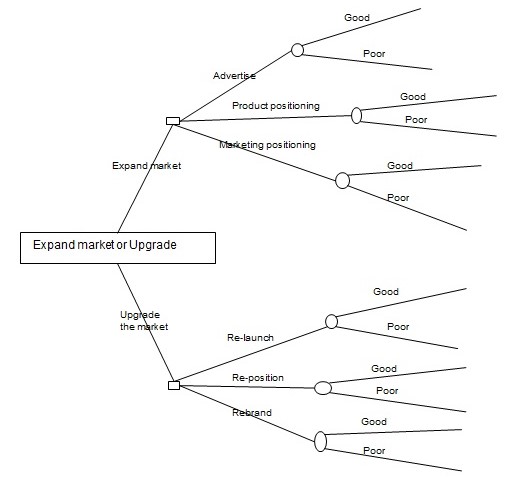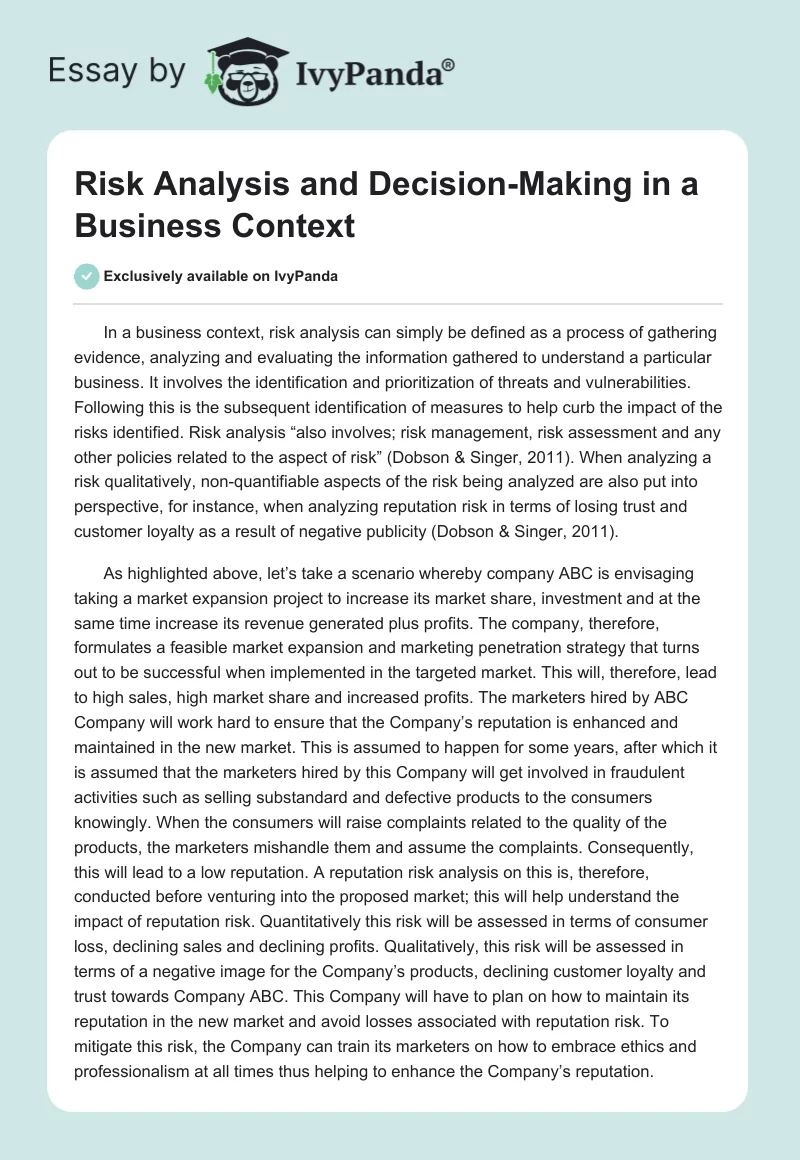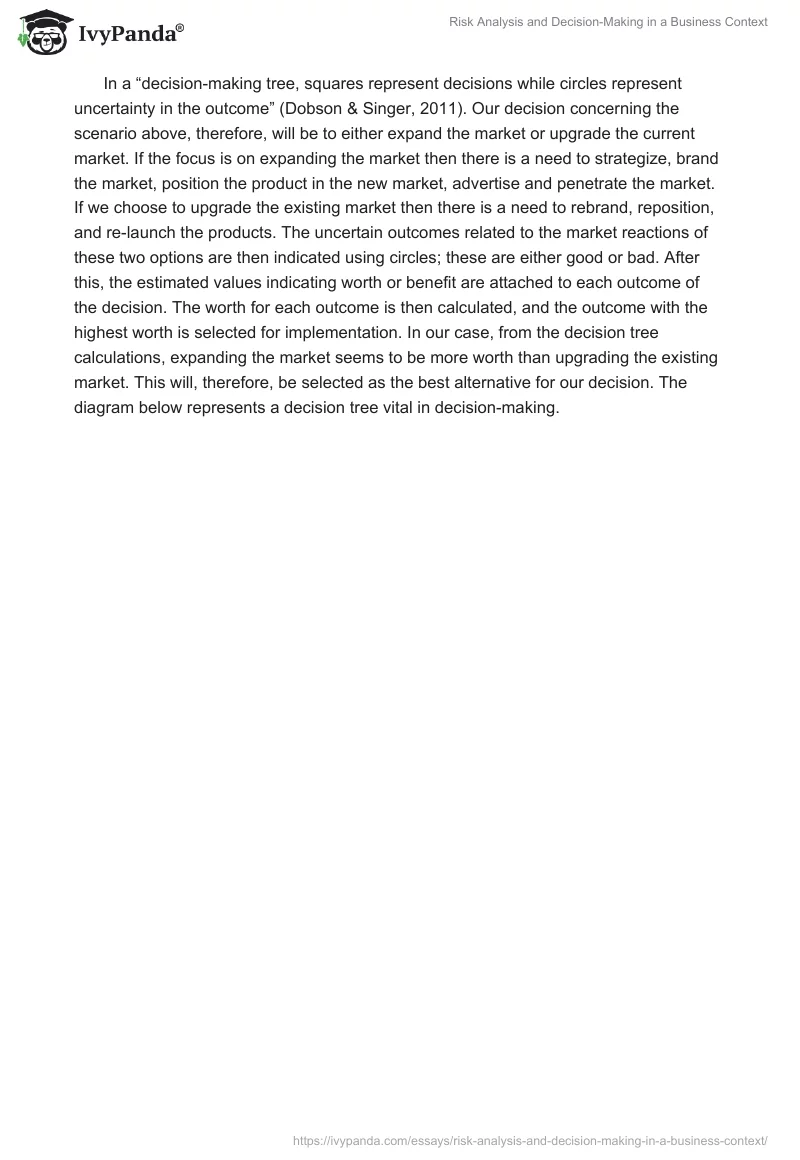In a business context, risk analysis can simply be defined as a process of gathering evidence, analyzing and evaluating the information gathered to understand a particular business. It involves the identification and prioritization of threats and vulnerabilities. Following this is the subsequent identification of measures to help curb the impact of the risks identified. Risk analysis “also involves; risk management, risk assessment and any other policies related to the aspect of risk” (Dobson & Singer, 2011). When analyzing a risk qualitatively, non-quantifiable aspects of the risk being analyzed are also put into perspective, for instance, when analyzing reputation risk in terms of losing trust and customer loyalty as a result of negative publicity (Dobson & Singer, 2011).
As highlighted above, let’s take a scenario whereby company ABC is envisaging taking a market expansion project to increase its market share, investment and at the same time increase its revenue generated plus profits. The company, therefore, formulates a feasible market expansion and marketing penetration strategy that turns out to be successful when implemented in the targeted market. This will, therefore, lead to high sales, high market share and increased profits. The marketers hired by ABC Company will work hard to ensure that the Company’s reputation is enhanced and maintained in the new market. This is assumed to happen for some years, after which it is assumed that the marketers hired by this Company will get involved in fraudulent activities such as selling substandard and defective products to the consumers knowingly. When the consumers will raise complaints related to the quality of the products, the marketers mishandle them and assume the complaints. Consequently, this will lead to a low reputation. A reputation risk analysis on this is, therefore, conducted before venturing into the proposed market; this will help understand the impact of reputation risk. Quantitatively this risk will be assessed in terms of consumer loss, declining sales and declining profits. Qualitatively, this risk will be assessed in terms of a negative image for the Company’s products, declining customer loyalty and trust towards Company ABC. This Company will have to plan on how to maintain its reputation in the new market and avoid losses associated with reputation risk. To mitigate this risk, the Company can train its marketers on how to embrace ethics and professionalism at all times thus helping to enhance the Company’s reputation.
In a “decision-making tree, squares represent decisions while circles represent uncertainty in the outcome” (Dobson & Singer, 2011). Our decision concerning the scenario above, therefore, will be to either expand the market or upgrade the current market. If the focus is on expanding the market then there is a need to strategize, brand the market, position the product in the new market, advertise and penetrate the market. If we choose to upgrade the existing market then there is a need to rebrand, reposition, and re-launch the products. The uncertain outcomes related to the market reactions of these two options are then indicated using circles; these are either good or bad. After this, the estimated values indicating worth or benefit are attached to each outcome of the decision. The worth for each outcome is then calculated, and the outcome with the highest worth is selected for implementation. In our case, from the decision tree calculations, expanding the market seems to be more worth than upgrading the existing market. This will, therefore, be selected as the best alternative for our decision. The diagram below represents a decision tree vital in decision-making.

A decision tree, “therefore, is an effective method for decision making as it provides a framework for making a decision and understanding its consequences while using guesses and available information” (Dobson & Singer, 2011).
Reference
Dobson, M., & Singer, D. (2011). Project Risk and Cost Analysis. Boston, MA: MC- Graw Hill/Irwin.


